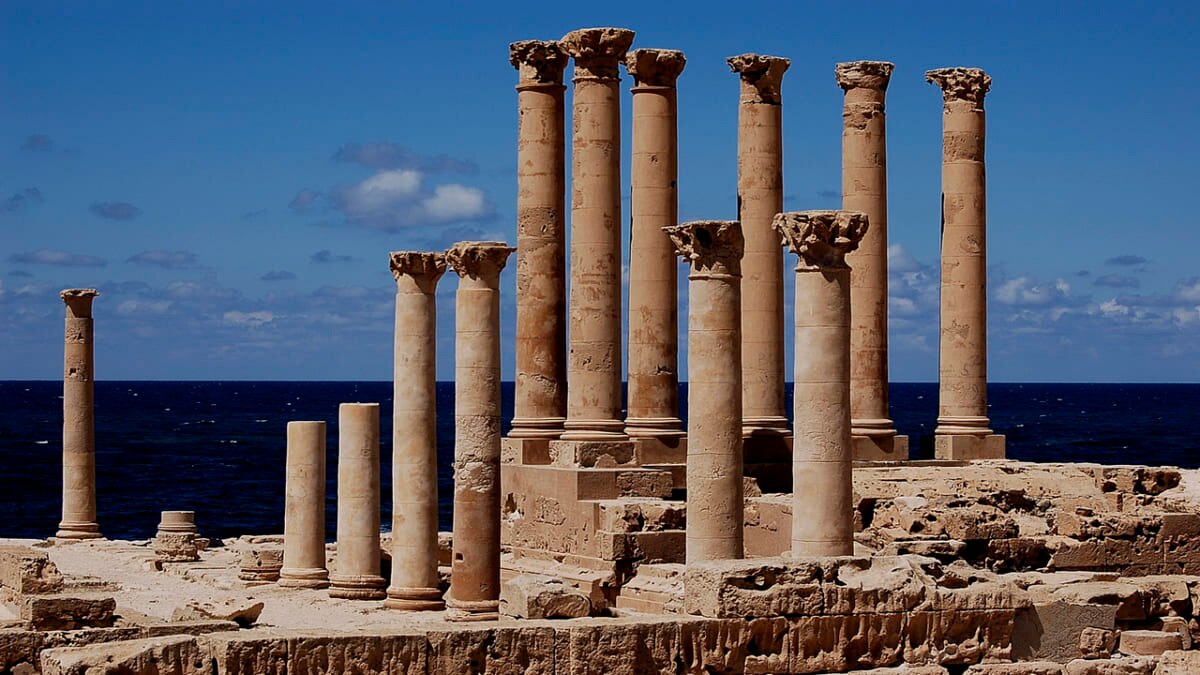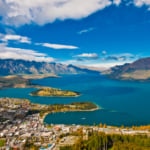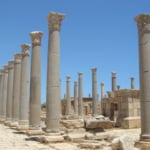Name: Archaeological Site of Leptis Magna
Location: Al Khums, Libya

5 Must-Visit Tourist Spots in Libya – A Country of Mediterranean Beauty, Ancient Ruins, and Vast Desert Landscapes
Located in North Africa, Libya is a country of stark contrasts between its northern and southern regions, making it an irresistible destination for history lovers. The north boasts breathtaking Mediterranean scenery and ancient ruins, while the south is home to vast deserts with prehistoric rock art. With five UNESCO World Heritage Sites, Libya offers an unforgettable experience for travelers.
From the Phoenicians and Carthaginians to the Romans, Umayyads, and the Ottoman Empire, Libya has witnessed the rise and fall of great civilizations. Here, visitors can feel the power of human history through its ancient ruins and the sheer might of nature in its endless desert landscapes.
Join us as we explore five of the best tourist spots in Libya, where history and natural wonders come together in an epic tale of humanity and Earth.
table of contents
[x] close
5 Must-Visit Tourist Spots in Libya – A Country of Mediterranean Beauty, Ancient Ruins, and Vast Desert Landscapes
1. Leptis Magna
Among Libya’s five UNESCO World Heritage Sites, Leptis Magna is an absolute must-visit. Located east of Tripoli, this site offers a glimpse into the grandeur of Roman civilization, with its well-preserved ruins overlooking the Mediterranean Sea.
Once a thriving city, Leptis Magna was gradually abandoned and buried under desert sands for nearly 1,000 years. Ironically, this natural preservation kept the ruins in remarkable condition. Today, only about 30% of the site has been excavated, and archaeological research continues.
Visitors can explore Roman bathhouses, flush toilets, triumphal arches, an amphitheater, public squares, arenas, and assembly halls, providing insight into the advanced lifestyle of the Roman people. The on-site museum also showcases artifacts unearthed from excavations.
For anyone traveling to Libya, a visit to Leptis Magna—one of North Africa’s largest archaeological sites—is an absolute must.
2. Sabratha
Another UNESCO-listed site, Sabratha, is a must-see. Located west of Tripoli, this city flourished as a Phoenician trading hub in the 8th–9th centuries BC. However, by the 4th century AD, a series of earthquakes led to its decline. Much like Leptis Magna, Sabratha was buried under sand for centuries until 20th-century excavations revealed its ruins.
The amphitheater, dating back to the 3rd century, could accommodate 3,000 spectators and remains in excellent condition. During spring, the contrast between the wildflower-filled fields and the ancient ruins creates a stunning view.
The site also features temples dedicated to Liber Pater, Isis, and Serapis, as well as geometrically patterned mosaic baths. Walking through these ruins, visitors can imagine the lives of ancient civilizations, making Sabratha an ideal historical destination.
Name: Archaeological Site of Sabratha
Location: District of Zawia, Libya
3. Old Town of Ghadames
Recognized as a UNESCO World Heritage Site, the Old Town of Ghadames is one of Libya’s most fascinating destinations. Enclosed by a 7-km-long city wall, Ghadames is often referred to as the “Pearl of the Desert.”
The town’s entire architecture is painted white, creating a cool and refreshing oasis city amidst the desert. The interiors of the buildings are adorned with traditional North African arabesque patterns, adding a sense of elegance to the city’s bright, white exterior.
Although temperatures outside can exceed 40°C (104°F), the cool interior of the buildings ensures that locals can escape the summer heat. For travelers exploring Libya’s arid landscapes, the Old Town of Ghadames offers a much-needed refreshing experience.
Name: Old Town of Ghadames
Location: Ghadames Governorate, Ghadamis, Libya
4. Ubari
Southern Libya is dominated by the famous Sahara Desert, and among its many wonders is the oasis town of Ubari. Nestled among towering, deep-red sand dunes, Ubari is a stunning desert retreat.
Once home to over 20 lakes, only four remain today, including the Gabraoun and Mandara Lakes. Despite this, the sight of palm trees thriving along the lake’s shores serves as a powerful reminder of life’s resilience in the harsh desert.
For an unforgettable experience, visitors can swim in the oasis lakes, offering a refreshing escape from the scorching Libyan sun. Exploring Ubari provides an opportunity to witness the breathtaking beauty of the Sahara.
Name: Ubari
Location: Wadi al Hayaa District, Libya
5. Tadrart Acacus
Located in western Libya, Tadrart Acacus is a mysterious and otherworldly desert region filled with striking rock formations shaped by centuries of sandstorms.
The most famous of these formations is the “Adad Rock”, which, as its name suggests in the Tuareg language, resembles a thumbs-up gesture.
Additionally, Tadrart Acacus is home to prehistoric rock paintings, listed as a UNESCO World Heritage Site. These ancient murals, created over 10,000 years ago, depict scenes of early human life, animals, and plants, offering a rare glimpse into the past.
Contemplating these paintings, one can’t help but wonder what messages ancient civilizations were trying to convey. A visit to Tadrart Acacus is a once-in-a-lifetime experience for history and nature enthusiasts alike.
Name: Tadrart Acacus
Location: Acacus Mountains, Fezzan, Ghat, Libya
◎ Summary
Libya's tourist attractions include many historical sites that have survived through the ages, making them truly worth visiting if given the opportunity. From prehistoric times to ancient civilizations, you may be able to experience the remnants of human history beyond imagination. The ancient ruins in northern Libya and the prehistoric artifacts in southern Libya each offer a unique and fascinating experience.
RELATED ARTICLES
REGIONS
CATEGORIES
FEATURED ON Libya
MOST POPULAR ON Libya
-
 1
1Doha: Must-see Attractions in the Capital of Qatar
-
 2
2Toronto: 10 Things to do in this Picturesque Canadian City
-
 3
3Amarillo: A City Famous for It’s Amazing Canyons, Great History and Music
-
 4
4South Korea: Dazzling Scenery, Rich Culture and Fascinating History
-
 5
5Kuwait: A Country in Middle East Asia Famous for Hot Sand Dunes and Stunning Cityscape






